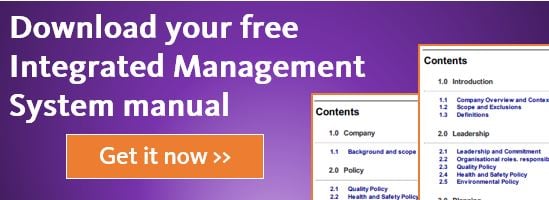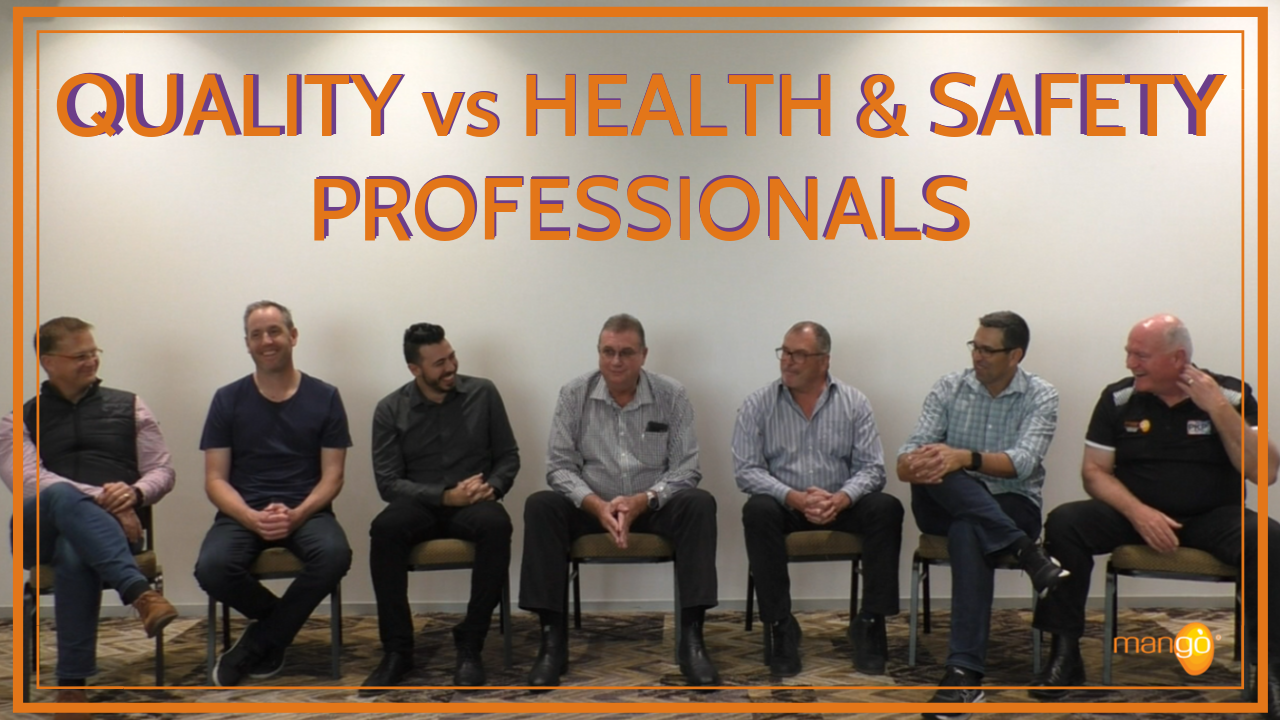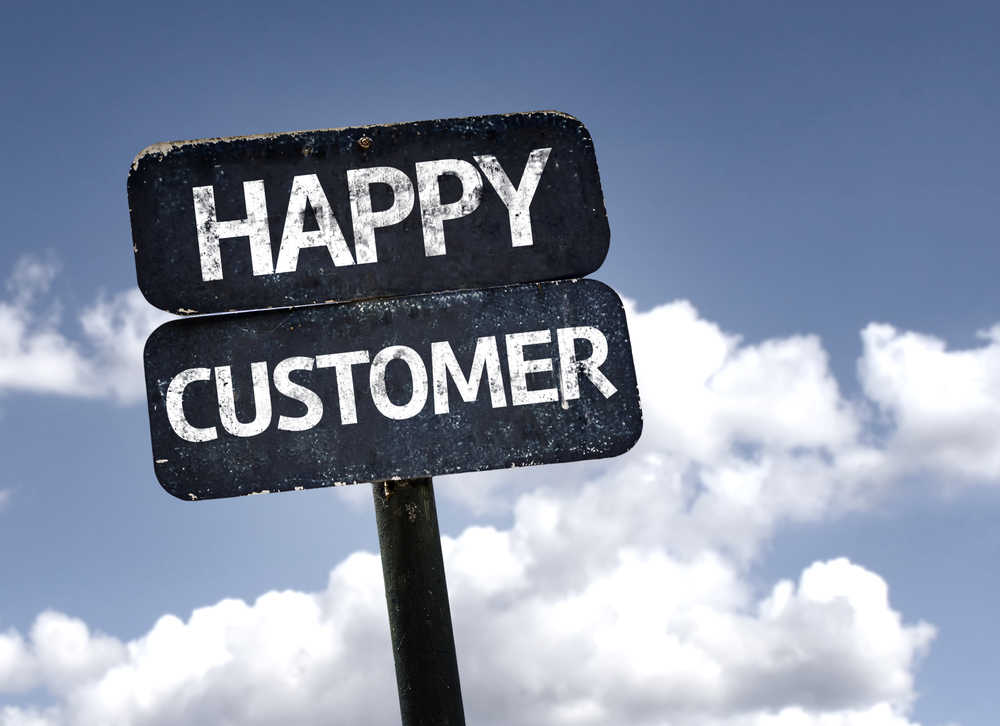It doesn’t take an entrepreneurial genius to realise that without your customers, your business doesn’t exist. Without people buying your products and services, you have exactly nothing. Of course, in healthy economic times finding customers can be relatively easy.
Just by doing the minimum of opening your doors, you’re likely to get a few people wandering through. You may even be able to scrape out a living that way, for a while.
Customer Satisfaction
But to really succeed and prosper over the long term - especially when the economy takes its inevitable, cyclical dip - you need to aim for your customers finding what Deming described as “joy in [y]our products and services”. You want your customers waxing lyrical about you. Recommending you. Loving you. And like any healthy relationship, communication with each other is fundamental to achieving this.
So when you arrive at clause 8.2 Requirements for Products and Services, you need to roll up your sleeves, enlist the help of your marketing team, and do your very best work. It’s a potential game changer.
Clause 8.2 is divided into three sections. The first is about how you communicate with customers, the second is about the requirements of customers, and the final section is about reviewing customer requirements before committing to supply.
Clause 8.2.1 - Communication with Customers
This covers how you communicate with customers about:
- Your products and services
- Handling enquiries, orders and contracts
- Getting feedback from them
- Handling customer owned property
- Action you will take if certain events may or may not occur
Here are some of the customer communications processes we use here at Mango:
- Communicating our product features on our website
- Training customers in the product during implementations and in help guides and FAQs
- Providing both online and offline support for the product
- Terms and conditions agreed online during the sign-up process
- Customer webinars
At Mango we’ve made a point of covering the various ways in which people prefer to give and receive communication. Deming once wrote that “people learn in different ways: reading, listening, pictures and watching”. A person’s learning style (such as auditory, visual etc), influences the type of communication preferences they have, so we’ve made sure to use a wide variety of tools, from blog posts to videos to photos to phone calls to webinars. Our view is that if we employ an assortment of communication methods, then we have a much higher chance of communicating successfully with more people, more often.
Clause 8.2.2 - Requirements of Customers
The second part of the clause deals with determining the requirements of the customer before you engage with them. These could include legal or regulatory requirements from local or national governments and any other that your company determines. You also need to meet the claims you make for your products and services as well.
At Mango, when we’re thinking of developing the product further, we capture possibilities in a Mango Requirements Document (MRD). These are internally-generated and might include ideas for new modules, or new layouts or interfaces. The MRD gives us a Roadmap of potential new features for our product.
We then combine the MRD with the “Dev Requests” we get from customers who use the product. Combining the MRD with Dev Requests means that we’re able to introduce new features, enhancements and updates to the Mango software in software releases.
Not only do we meet the explicit needs of the customer, but we also delight them with the added value of things they didn’t know they needed.
8.2.3 - Reviewing Customer Requirements
You must review customer requirements before committing to supply the product or service. You need to take into account a few things here.
You must consider:
- Delivery
- Installment
- Service
- Warranty
- Applicable acts and regulations
- What to do when providing verbal contracts.
Once all that is considered and reviewed, you need to formally accept the requirements with a confirmation back to the customer of what you are going to deliver and when. You need to keep documented information of this review.
For example here at Mango when a new client signs up, the Mango Sales team checks the quote against the order, checks the employee numbers against the quote, and if it’s all okay processes the order and sets up the account.
If there are any adjustments to be made there is an agreement of the change with the client by email. The order is then delivered to the Mango Implementation Team to then deliver, install and service the order with the customer.
Clause 8.2 isn’t a clause that you’ll want to just phone in. Get your very best people on it.
Takeaways
- Determine how you will communicate with your customers
- Determine the requirements of the customers
- Create processes to receive customer orders
- Review whether you can meet the customer’s order
- Ensure you have processes that can make necessary changes to the product or service when things change.
View previous blogs in this series "How to Implement a QMS and Achieve ISO 9001 Certification":
How to Implement a QMS and Achieve ISO 9001 Certification - Part 1: Introduction
How to Implement a QMS and Achieve ISO 9001 Certification - Part 2: Customer Focus
How to Implement a QMS and Achieve ISO 9001 Certification - Part 3: Leadership
How to Implement a QMS and Achieve ISO 9001 Certification - Part 4: Engagement of People
How to Implement a QMS and Achieve ISO 9001 Certification - Part 5: Process Approach
How to Implement a QMS and Achieve ISO 9001 Certification - Part 6: Improvement
How to Implement a QMS and Achieve ISO 9001 Certification - Part 7: Evidence Based Decision Making
How to Implement a QMS and Achieve ISO 9001 Certification - Part 8: Relationship Management
How to Implement a QMS and Achieve ISO 9001 Certification - Part 12: Clause 5.2 Policy
How to Implement a QMS and Achieve ISO 9001 Certification - Part 15: Clause 6.2 Objectives
How to Implement a QMS and Achieve ISO 9001 Certification - Part 16: Clause 7.1 Resources
.png?width=200&height=51&name=image%20(2).png)





